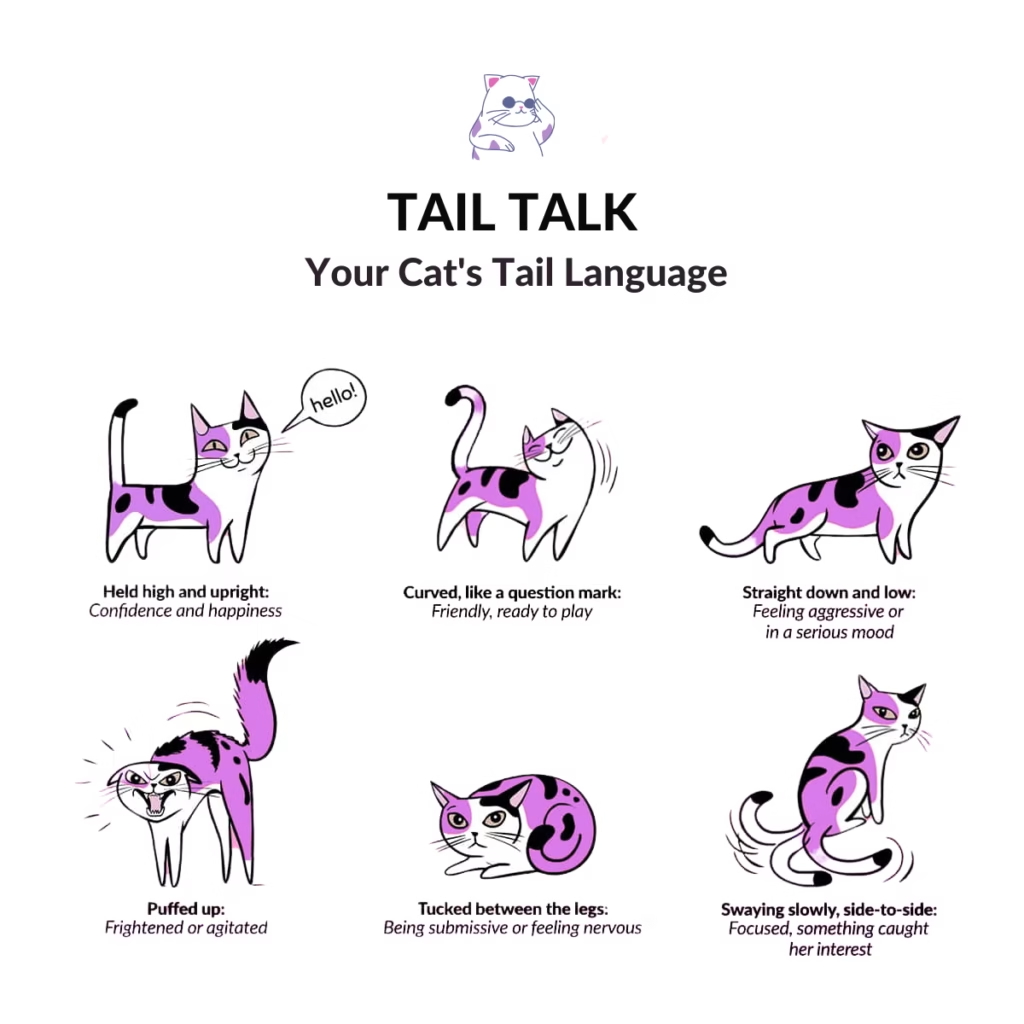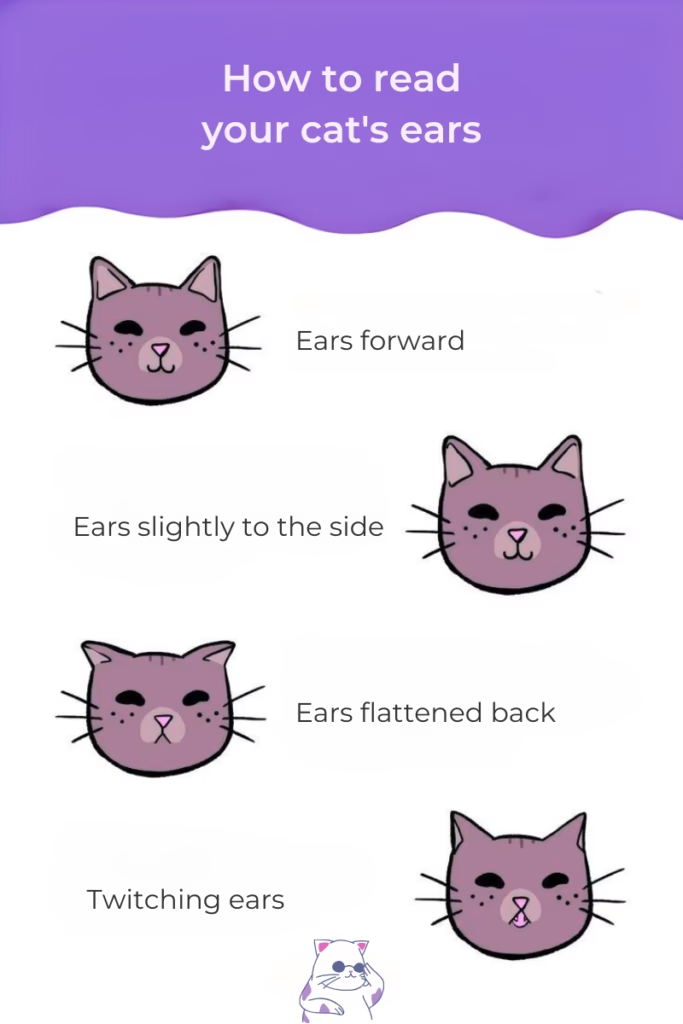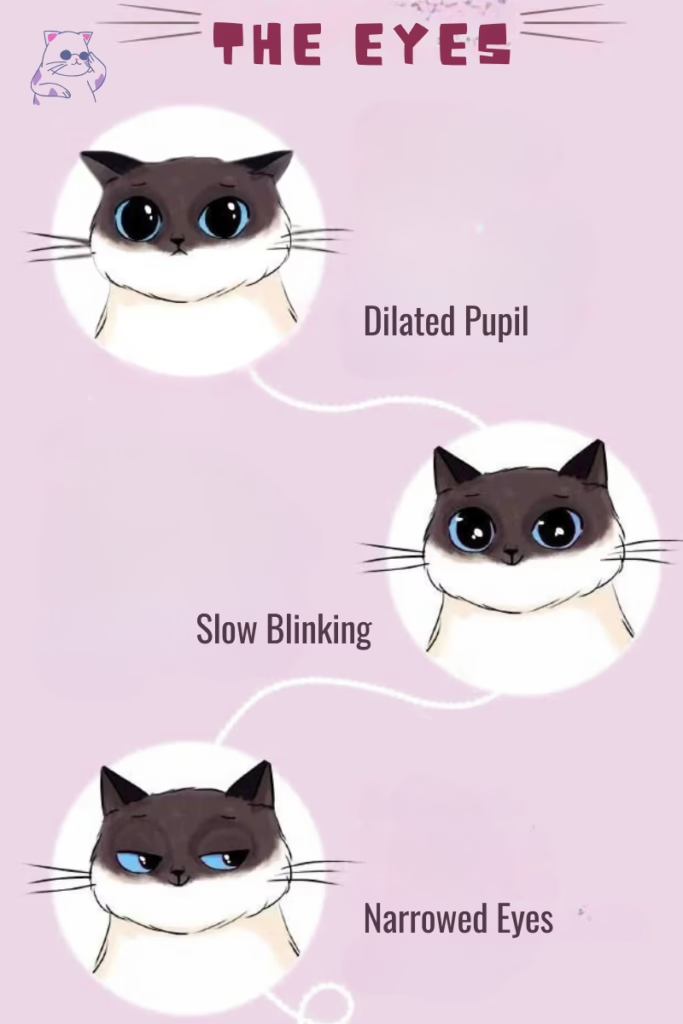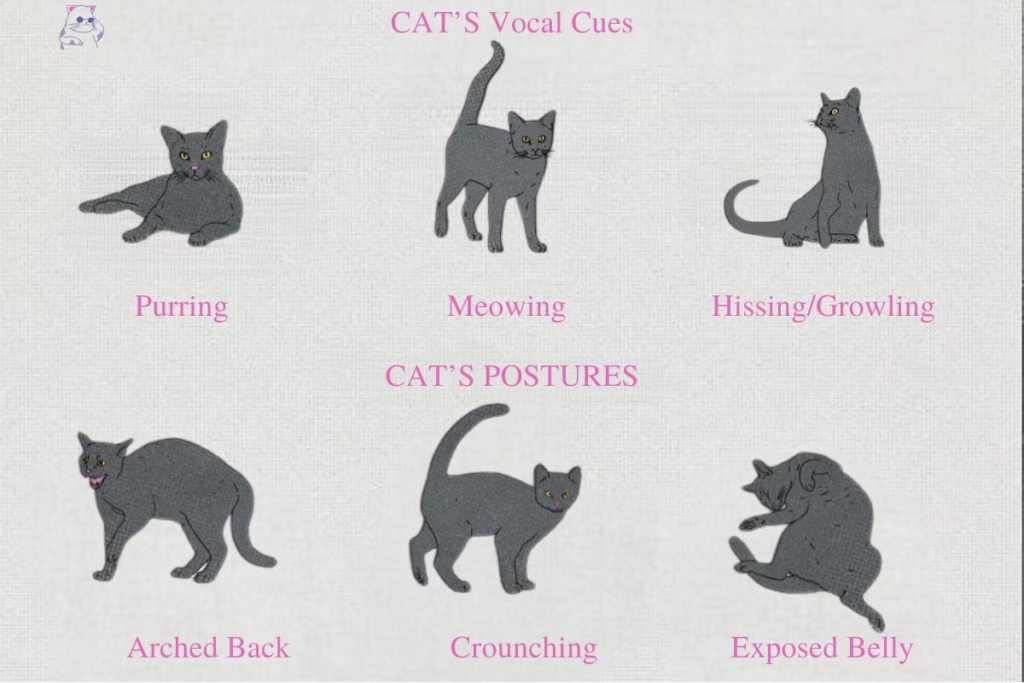Cats are mysterious creatures, often communicating through subtle movements, tail flicks, and ear twitches rather than vocalizations. Understanding your cat’s body language can strengthen your bond and help you respond to their needs more effectively. Every movement and posture holds meaning, providing insight into their emotions, comfort levels, and even potential health concerns. Here’s a guide to decoding what your feline friend is trying to tell you.
1. Tail Talk: What Does It Mean?

A cat’s tail is one of the most expressive parts of its body, and each movement tells a story:
Tail Up and Straight – A sign of confidence and friendliness. If your cat approaches you with their tail held high, often with a slight curve at the tip, it means they are happy, relaxed, and greeting you warmly.
Puffed-Up Tail – This indicates fear, agitation, or overstimulation. When a cat’s tail puffs up like a bottle brush, they are trying to appear larger to ward off a perceived threat.
Slowly Swaying Tail – A gently swaying tail often signals curiosity or a relaxed state of awareness. However, if the movements become more intense, it could indicate mild irritation or indecisiveness.
Fast Flicking Tail – This is a warning sign of frustration or annoyance. If your cat’s tail starts whipping back and forth rapidly, it’s best to give them space.
Tucked Tail – A cat that tucks its tail tightly against its body is feeling fearful, submissive, or insecure. This posture is commonly seen in anxious or shy cats.
2. Ear Movements: Listening Closely
Cats use their ears to pick up sounds and express emotions. Since their ears can rotate 180 degrees, they are highly sensitive to their environment. Here’s what different ear positions mean:
Ears Forward – This indicates attentiveness, curiosity, or playfulness. Your cat is engaged with their surroundings and may be interested in exploring, hunting, or playing.
Ears Slightly to the Side – A relaxed cat may hold its ears in a slightly sideways position, signaling calmness. However, if the ears tilt too much, it could indicate mild unease, discomfort, or indecision.
Ears Flattened Back (Airplane Ears) – When a cat’s ears are pinned back against its head, it is usually a sign of fear, aggression, or overstimulation. This is often accompanied by growling, hissing, or a defensive posture, indicating that the cat feels threatened or cornered.
Twitching Ears – Rapid ear twitching can signal irritation, agitation, or an attempt to shake off a minor annoyance like a sound or an itch. If the twitching persists, it may be a sign of stress, discomfort, or even an ear infection.
Ears Constantly Moving – If a cat’s ears are continuously swiveling in different directions, they are highly alert and scanning their surroundings for potential threats or interesting sounds. This is common in unfamiliar environments or when they hear sudden noises.

3. Eye Expressions: The Windows to Their Mood

A cat’s eyes reveal their emotions, trust, and mood. Noticing changes in their pupils, blinks, and eye shape helps you understand what they’re feeling.
Slow Blinking (Cat Kisses) – A slow blink is a powerful sign of trust and affection. When a cat looks at you and slowly closes and reopens their eyes, they are expressing relaxation and comfort. Returning the slow blink can reinforce your bond and make them feel secure.
Dilated Pupils (Wide Eyes) – Large, round pupils can indicate a range of emotions, from excitement to fear. Cats often display dilated pupils when playing, hunting, or feeling startled. If their pupils are excessively large in a well-lit environment, it could also signal stress or overstimulation.
Slow Blinking (Cat Kisses) – A slow blink is a powerful sign of trust and affection. When a cat looks at you and slowly closes and reopens their eyes, they are expressing relaxation and comfort. Returning the slow blink can reinforce your bond and make them feel secure.
Constricted Pupils (Narrow Slits) – When a cat’s pupils become very small and narrow, they may be feeling irritated, aggressive, or deeply focused. This is often observed before a cat pounces on a toy or prey, or when they are feeling defensive.
Staring Without Blinking – A hard, unblinking stare can be a sign of dominance, confrontation, or unease. Cats may use this behavior when asserting themselves in front of other cats or humans. If your cat stares at you intensely, they may be trying to communicate something specific, such as hunger or the desire for attention.
Half-Closed Eyes (Relaxed State) – When a cat’s eyes are partially closed, it usually means they are feeling content, drowsy, or deeply relaxed. This is a sign of trust, as cats are naturally more alert when they feel threatened.
4. Body Posture, Vocal Cues and Other Behaviors
A cat’s overall posture is a key indicator of their emotional state:
Arched Back with Raised Fur – This is a defensive posture often seen when a cat feels threatened. They try to make themselves appear larger to scare away potential dangers.
Exposed Belly – A cat lying on its back with its belly exposed is displaying trust. However, this is not always an invitation for belly rubs—some cats dislike having their stomach touched and may react defensively.
Crouching with Tensed Muscles – A crouched posture with tensed muscles and a flicking tail indicates that your cat is on high alert. They may be preparing to pounce or escape.

While body language is crucial, vocalizations also play a role in communication:
- Purring – Generally a sign of contentment, but some cats purr when they are anxious or in pain as a self-soothing mechanism.
- Hissing or Growling – Clear indicators of distress, fear, or aggression. If your cat hisses or growls, it’s best to step back and assess the situation.
- Meowing – Cats use meows primarily to communicate with humans. A short, high-pitched meow often signals a friendly greeting, while persistent or loud meows may indicate hunger, attention-seeking, or distress.
- Kneading – This rhythmic paw movement is a comforting behavior that originates from kittenhood when nursing. It’s a sign that your cat feels happy and secure.
Paws for Thought
By paying close attention to your cat’s body language and vocal cues, you can better understand their emotions, desires, and concerns. Every cat is unique, so take time to observe their individual signals. Strengthening this communication will deepen your bond and ensure a happier, healthier relationship with your feline friend. The more you learn about your cat’s expressions and behaviors, the better equipped you’ll be to respond appropriately to their needs!
